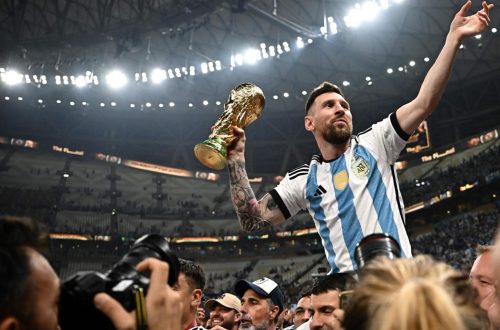By: Amir Nawabi
Player safety is a hot topic in professional sports, but nowhere is the conversation more prevalent than in the NFL. Concerns about head injuries have increased over time in a contact sport like football, where head collisions are common. In 2015, former players filed a class action lawsuit against the NFL, in a lawsuit dubbed the “NFL concussion lawsuit.”[1] The plaintiffs alleged that the NFL failed to take reasonable actions to protect them from the chronic risks of head injuries in football.[2] The class action lawsuit included “[a]ll living NFL football players who retired from playing professional football before July 7, 2014, as well as their representative claimants and derivative claimants.”[3] Players alleged that they suffered repetitive traumatic brain injuries, including concussions, during their time in the NFL. As a result of these injuries, players suffered symptoms such as headaches, blurred vision, memory loss, insomnia, dementia, and mood swings.[4] Players allege that the negligence and concealment of these injuries manifested in various neurological impairments, such as “CTE, Parkinson’s disease, early dementia, and Amyotrophic lateral sclerosis (ALS).”[5] In 2015, the NFL settled the lawsuit for an estimated $1 billion.[6] Since the lawsuit, the NFL began to take proactive measures to ensure player safety. These measures include changing rules on player safety, funding brain injury research, and even creating youth football programs to teach kids how to tackle properly.[7] Now, approximately nine years later, we have the Guardian Cap.
Enter the Guardian Cap, a soft-shell helmet cover that enhances player safety. The helmet’s goal is to reduce head injuries for players. The Guardian Cap was created in 2010 and have been used in practice since 2015. Since its introduction, analytics showed that concussions decreased by 50% during practice. .[8] But what are Guardian Caps exactly, and how do they relate to the NFL’s larger safety programs?
Inventors developed the Guardian Cap in 2010 to address the clear need to advance the standard helmet, which has changed little since the 1960s.[9] The NFL rolled out Guardian Caps slowly. In 2020, many NFL teams used the Guardian Cap during practices. After a year of data collection and lab testing that showed a “statistically significant” improvement over helmets alone, the NFL permitted Guardian Caps in the 2021 season.[10] The idea is quite simple: by adding a layer of cushioning to the outside of player’s helmets, the cushion can absorb and disperse impact from collisions.
In early 2022, the NFL mandated the use of Guardian Caps for all offensive lineman, defensive lineman, tight ends, and linebackers during training camp.[11] The rationale behind this mandate is that those position groups are more prone to helmet-to-helmet blows; thus, the need for extra protection is important. By the 2024 season, the NFL expanded their mandate, including almost all position groups to wear a Guardian Cap in training camp.[12] The NFL’s faith in the Guardian Cap continues to grow. It is now optional for players to wear the Guardian Cap during regular season games.[13] As of now, only five to ten players have opted to wear it during games.[14] In a league with nearly 2,000 players, it begs the question as to why more players are not opting to use the Guardian Cap.
While the NFL’s efforts are commendable, many players are against the idea of the Guardian Cap. According to an anonymous survey, in which beat writers queried 110 players across the league on a wide range of topics, sixty-five of the 109 players who responded to this question oppose the idea of wearing Guardian Caps in games.[15] Arguments against wearing the Guardian Cap are that the cap is uncomfortable, adds extra weight, or they hate the look.[16] Some players are comfortable with the inherent risks that come with football. Football is a contact sport by nature. Some players believe that this is what they signed up for.
The NFL continues to try and find ways to make an impact on player safety. For example, the NFL is using data to improve player safety and advance the game through rule changes, including kickoff alterations and the “Use of the Helmet” rule. The “Use of the Helmet” rule declares that it is a foul whenever a player lowers his head to initiate and make contact with his helmet against an opponent.[17] While concussions still occur, the NFL continues to make strides in reducing the number of concussions, while still maintaining the culture of physicality that their fans love.
Guardian Caps are a step in the right direction for the NFL’s attempts to increase player safety, but they are not a cure-all. In the meantime, the NFL’s legal obligations to protect its players will continue to be a central theme. Guardian Caps are a promising step forward, but continued efforts are essential for the NFL to safeguard its players.
[1] Ty McDuffey, NFL Concussion Lawsuit Information, FindLaw, https://www.findlaw.com/ [https://perma.cc/MA9W-JEVN] (last visited Oct. 1, 2024).
[2] In re Nat’l Football League Players Concussion Inj. Litig., 821 F.3d 410, 421 (3d Cir. 2016).
[3] Id. at 425.
[4] McDuffey, supra note 1.
[5] Id.
[6] Id.
[7] Id.
[8] Nicole Kraft, NFL Advances Helmet Safety With Guardian Caps And Position-Specific Gear, Forbes, (Sept. 30, 2024), https://www.forbes.com/[https://perma.cc/73B5-KLZZ].
[9] Guardian Caps, Guardian Sports (Sept. 30, 2024), https://guardiansports.com/[https://perma.cc/5PC4-VYU7].
[10] Id.
[11]NFL Mandates Guardian Caps, Guardian Sports (Sept. 30, 2024), https://guardiansports.com/[https://perma.cc/67FF-TW7J].
[12]Expanded NFL Mandate, Guardian Sports (Sept. 30, 2024), https://guardiansports.com/[https://perma.cc/YTQ9-LDZ8].
[13] NFL to give players option to wear Guardian Caps during regular-season games, National Football League (Oct. 6, 2024), https://www.nfl.com/[https://perma.cc/VQ88-D5YZ].
[14] Mike Jones & The Athletic NFL Staff, NFL Guardian Caps: Anonymous Player Poll, The New York Times, (Oct. 3, 2024), https://www.nytimes.com/[https://perma.cc/APZ2-T3MD].
[15] Id.
[16] Id.
[17] Player Health & Safety, National Football League (Oct. 1, 2024), https://operations.nfl.com/[https://perma.cc/2PEL-UWBL].





